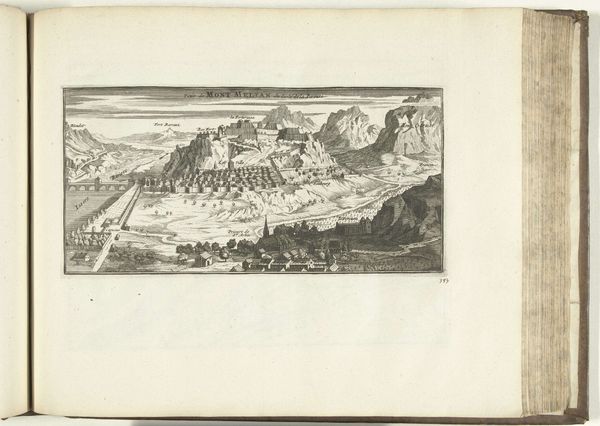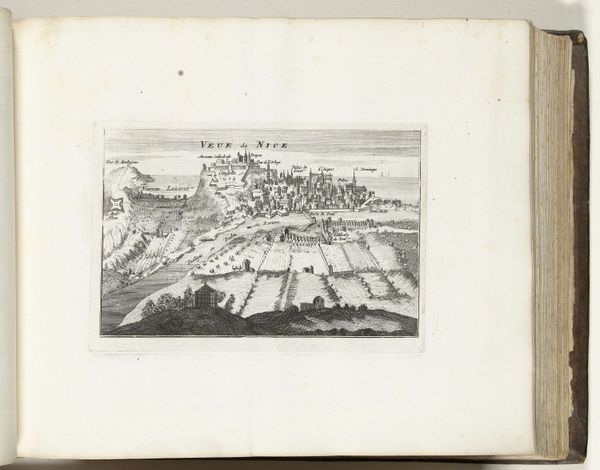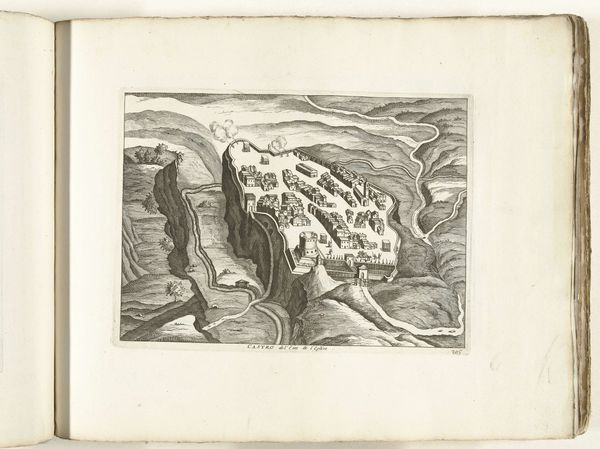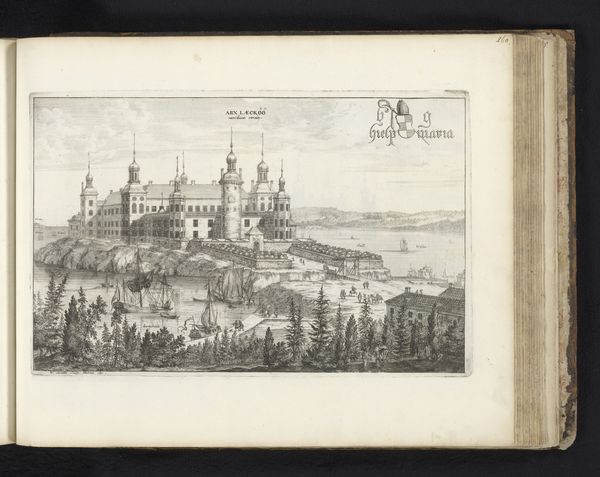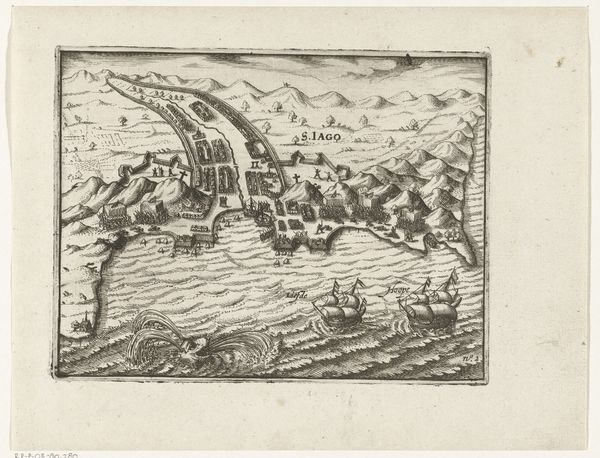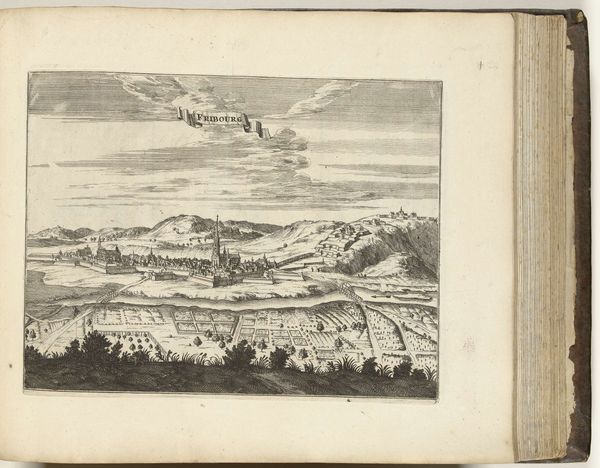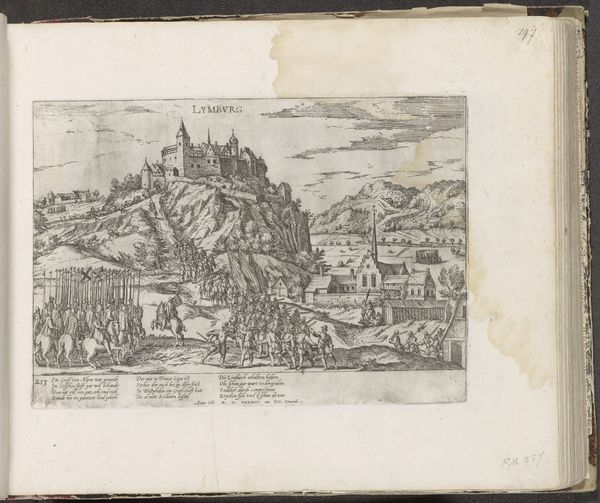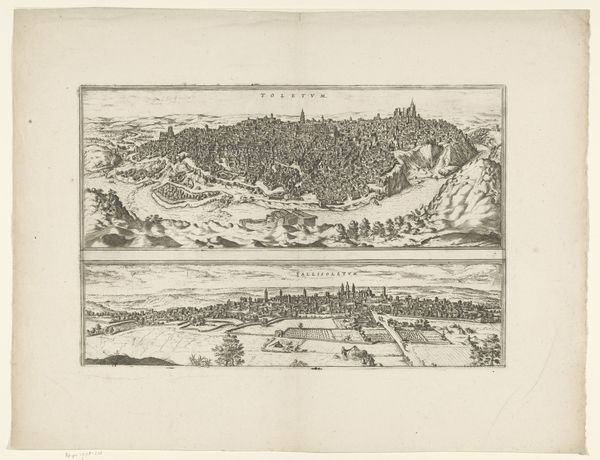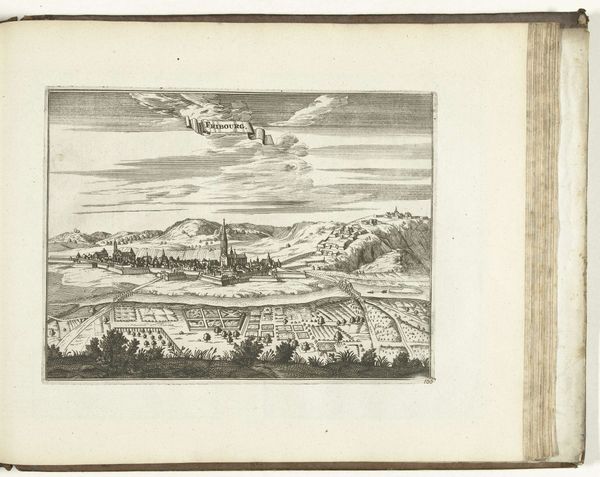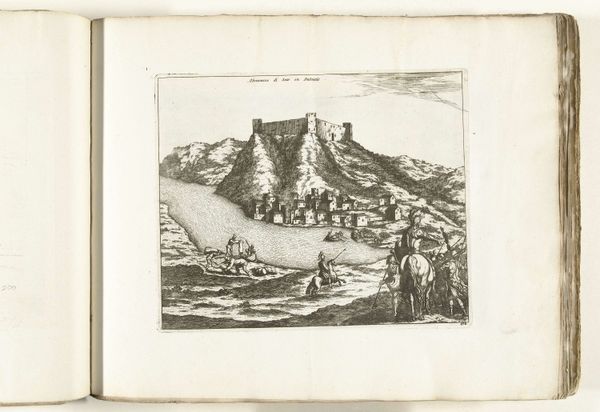
print, engraving
#
baroque
# print
#
landscape
#
cityscape
#
engraving
Dimensions: height 200 mm, width 276 mm
Copyright: Rijks Museum: Open Domain
Curator: Welcome. Before us, we have an engraving from around 1702 titled, "Gezicht op Nadin in Kroatië," or "View of Nadin in Croatia." Editor: It looks like a dreamlike fortress presiding over the landscape. There's an almost surreal quality in how starkly it's rendered against that white sky. Curator: The anonymous artist captured Nadin using meticulous lines, a signature characteristic of baroque printmaking. Note the composition's reliance on sharp contrasts between light and shadow. Editor: Baroque art often reinforced existing hierarchies. I'm interested in how this cityscape functions within a colonial gaze. The rendering is precise, but whose vision is centered? What was Croatia under Austro-Hungarian rule really like? What stories from marginalized people aren't visualized here? Curator: While I understand that point of view, consider how the formal qualities invite a deeper understanding of place. See the artist's attention to verticality; from the hilltop, the spires ascend, reinforcing a spiritual and perhaps earthly power structure through visual cues alone. Editor: Those same "visual cues" may reinforce colonial narratives of domination. Look closer. What power does an anonymous artist hold? And what relationship did the Dutch have with Croatian territories at that time? Visualizing subjugated people becomes another form of oppression. I find myself grappling with who profits from this landscape and at whose expense. Curator: These are valuable contextual considerations that prompt reflection beyond mere visual appreciation. Perhaps what we observe isn’t simply the depiction of a town, but also the rendering of an idealized or ideological construct of order, observed and reproduced. Editor: Precisely! So, while we engage with the detailed aesthetic, we must also question the embedded power dynamics inherent in its representation. It urges us to think critically about history through a lens of visibility and erasure.
Comments
No comments
Be the first to comment and join the conversation on the ultimate creative platform.
